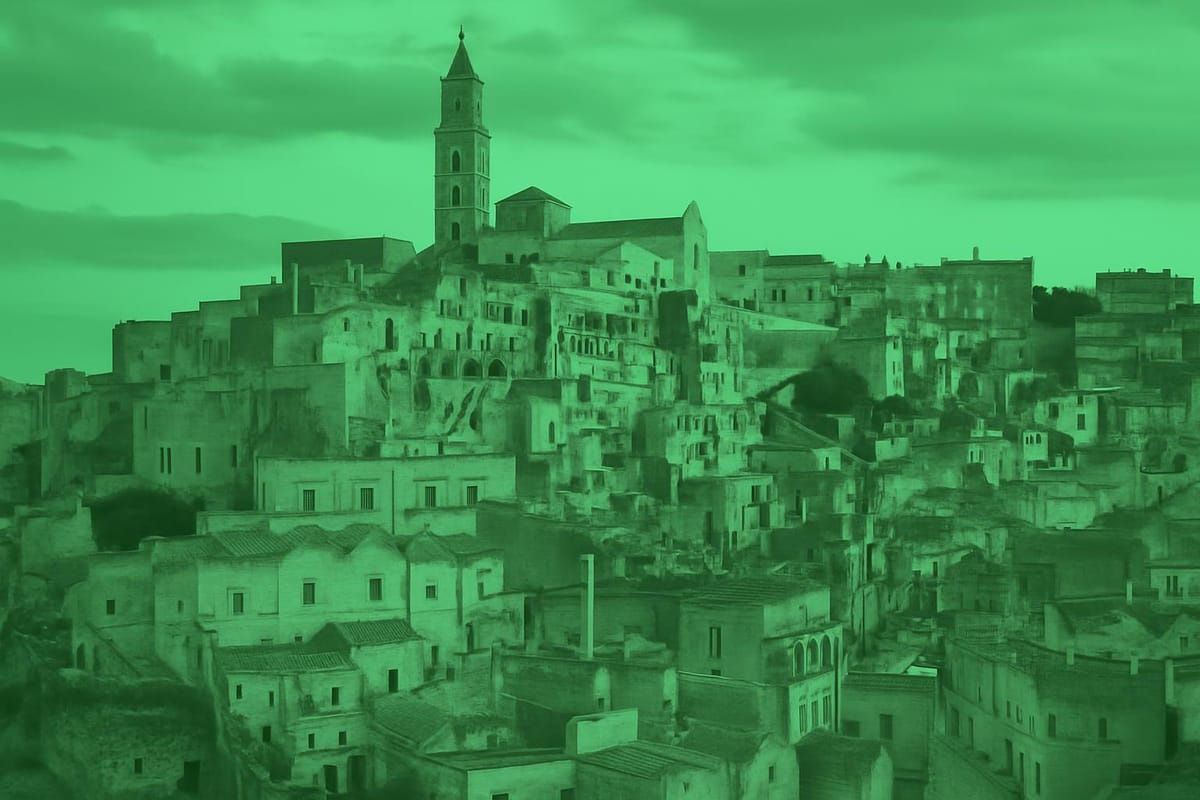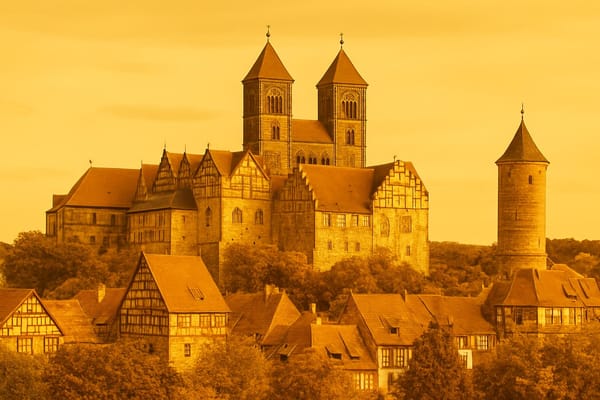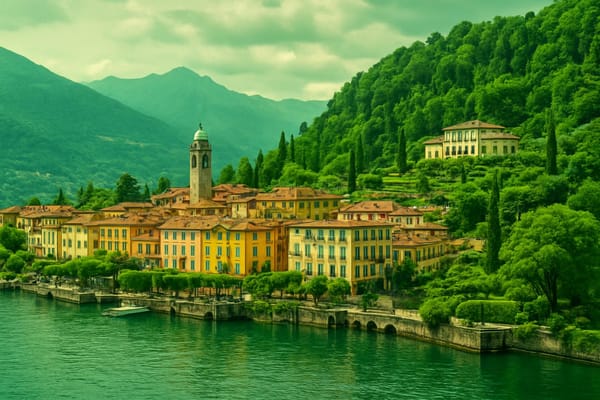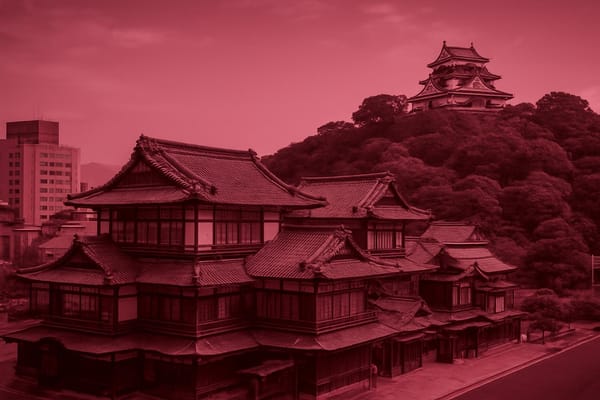Matera
Explore UNESCO-listed cave dwellings, ancient stone streets, rock-hewn churches & panoramic views.

Important things to know about Matera
Matera, Italy is a city of layered time and resilient character, perched in the region of Basilicata in southern Italy, where sun-baked stone walls and narrow alleys create a tapestry of lived history and contemporary life; its urban fabric blends ancient carved homes, modern restorations, and everyday neighborhoods where residents weave tradition with present-day rhythms, cultivating local crafts, culinary traditions, and community rituals that give the city a palpable sense of identity. The landscape around Matera shapes local livelihoods and culture, with its terraces, ravines, and the distinctive relationship between built environment and geology informing construction techniques, seasonal patterns, and social practices; artisans, restaurateurs, scholars, and families all contribute to a layered economy that values heritage alongside innovation, while small businesses, creative workshops, and cultural enterprises help sustain a year-round urban pulse. Matera’s climate and geography influence agricultural connections and culinary choices, reinforcing ties between city and countryside, and its reputation as a place of study and inspiration attracts filmmakers, writers, and researchers who engage with its textures and stories without overshadowing daily life. Throughout, the city maintains a quiet grandeur born from centuries of adaptation, a living sense of continuity where history, community, and modern resilience intersect to shape an authentic urban experience in southern Italy that resonates beyond simple labels and invites deeper appreciation of its social and material fabric.
Sightseeing hot-spots in Matera
Matera is best known for the ancient Sassi di Matera, a dramatic network of stone-carved dwellings and alleyways that feel suspended in time. Wandering through the honeycombed streets, visitors discover how families once lived in caves connected by stairways and terraces, making the city a living museum of historic cave dwellings. The Sassi’s otherworldly atmosphere and archaeological significance earned Matera recognition as a UNESCO World Heritage Site, and this status has helped preserve its unique architecture while attracting travelers eager to experience one of Italy’s most photogenic towns.
Beyond the labyrinth of stone houses, Matera’s highlights include an extraordinary concentration of rock churches, many adorned with Byzantine frescoes that survived centuries of neglect. The hilltop Cathedral offers panoramic views of the ravine, while intimate spaces like the Casa Grotta reveal recreated domestic interiors that tell stories of everyday life. Museums and restored homes blend with atmospheric shops and cafés, and the city’s cinematic appeal is evident in films shot on location, which have introduced wider audiences to Matera’s dramatic scenery and cultural resonance.
For unforgettable Matera sightseeing, plan to linger at sunset when the warm stone glows and the ravine comes alive with color at the main Belvedere points. Nearby the Parco della Murgia offers rugged trails and vantage points to admire the Sassi from across the ravine, making it perfect for photographers and nature lovers. Combine historical exploration with regional cuisine in local trattorie to taste Lucanian specialties; whether you’re chasing panoramic views, religious art, or the immersive charm of cave communities, Matera delivers an evocative travel experience rich in heritage and visual wonder.
Hotels to enjoy in Matera
Matera’s hotel scene blends ancient charm with modern comfort, making hotels in Matera an unforgettable part of any trip to southern Italy. Nestled among the iconic Sassi di Matera, many properties offer the rare chance to sleep in refurbished stone dwellings and cave hotels that preserve historic features while providing contemporary amenities. From intimate boutique stays in the winding lanes of the historic center to upscale luxury properties with spas and gourmet restaurants, visitors can choose accommodations that match a romantic getaway, cultural itinerary, or family holiday. Travelers searching for the best hotels in Matera often prioritize locations with panoramic views of the ravine, easy access to museums and churches, and authentic local service that highlights Basilicata cuisine and wine.
Booking a stay in Matera rewards guests with proximity to a living museum - the UNESCO World Heritage Sassi - and an array of experiences you won’t find elsewhere. Many hotels double as storytellers, offering guided walks, cooking classes, and curated tours that illuminate the city’s millennia-old architecture and contemporary artistic life. Budget-conscious explorers can find comfortable bed and breakfast options and guesthouses that focus on sincerity and warmth, while design-minded travelers will appreciate restored cave suites with natural stone interiors and modern lighting. Whether you search for convenience near train connections, a scenic terrace for sunset photos, or an exclusive suite for a special occasion, Matera’s accommodation options make it easy to plan a memorable stay in one of Italy’s most evocative destinations.
Restaurants to try in Matera
The restaurants of Matera offer an evocative blend of history and flavor, where dining often takes place in carved stone rooms beneath the ancient streets of the Sassi di Matera. In these atmospheric cave restaurants, chefs reimagine traditional Lucanian cuisine by highlighting locally sourced ingredients such as the celebrated pane di Matera, aromatic olive oil, wild herbs, and sheep’s cheeses. Menus frequently feature rustic pasta like cavatelli, savory cured meats such as lucanica, and crunchy peperoni cruschi, complemented by regional wines including Aglianico del Vulture. The result is a sensory experience that pairs the visual drama of UNESCO-listed landscapes with the rich, seasonal flavors of Basilicata, whether you choose a candlelit grotto, a sunlit terrace overlooking the ravine, or a contemporary bistro in the town’s historic center.
Exploring Matera restaurants rewards travelers who seek authenticity and culinary discovery: many establishments emphasize farm-to-table sourcing, tasting menus that trace local food traditions, and friendly service that explains the provenance of each plate. For those prioritizing food culture, options range from relaxed trattorie serving hearty, home-style fare to refined kitchens offering modern interpretations of Southern Italian classics, all framed by the stone architecture that makes Sassi di Matera unique. Whether you’re planning a gastronomic itinerary or a casual evening of regional specialties, the dining scene in Matera showcases the best of Italian and Mediterranean flavors while celebrating the specific terroir and artisanal products of Basilicata.
Best shopping stops in Matera
Exploring shopping in Matera is as much a cultural journey as a retail one: winding through the UNESCO-listed Sassi di Matera you’ll find hidden artisan workshops carved into rock where local craftspeople turn limestone, ceramics and glass into unforgettable keepsakes. Boutiques along Via Ridola and the streets near Piazza San Pietro Caveoso offer a mix of contemporary design and traditional wares, from handcrafted jewelry and textiles to modern ceramics inspired by ancient shapes. Antique lovers will delight in small galleries and vintage shops tucked into cave dwellings, while fashion-forward travelers can discover independent designers and concept stores presenting unique garments and accessories that you won’t see back home.
Food lovers will want to sample and buy authentic local food products that make perfect edible gifts: bottles of extra virgin olive oil, local Aglianico wines, jars of sun-dried tomatoes and crunchy peperoni cruschi, plus artisanal sweets and specialty breads from family bakeries. The market stalls and specialty food shops capture the rich flavors of Basilicata, and many producers are happy to explain their craft, offering tastings and recommendations for pairing. Whether you’re searching for stone-carved souvenirs, bespoke ceramics, or gourmet specialties, Matera shopping blends history, creativity and taste-making every purchase a story and every alley a new discovery.
Nightlife highlights in Matera
Matera nightlife comes alive as the sun sets over the Sassi di Matera, turning ancient stone into a warm backdrop for evening exploration. From intimate cave bars carved into the rock to elegant rooftop bars with panoramic views, the city blends history and modern leisure in one memorable night out. Enjoy a leisurely aperitivo on a terrace while locals and travelers mingle, then follow the glow down winding alleys where cozy enotecas serve regional wines and creative cocktails inspired by Lucanian flavors. The contrast between the silent, moonlit architecture and the vibrant pockets of music and conversation makes for a uniquely atmospheric experience that keeps visitors returning for more of Matera nightlife.
As darkness deepens, the city's offerings expand to include energetic live performances and laid-back acoustic sets in historic cellars, keeping the soundtrack of the night diverse and engaging. Street festivals and cultural events frequently animate public squares, showcasing Italian cuisine, contemporary art, and traditional music against the dramatic UNESCO backdrop. Whether you prefer a late-night jazz set, a bustling club with DJs, or a slow stroll sampling local cheeses and pasta, Matera’s evening scene rewards curiosity and a taste for discovery. For travelers seeking both charm and excitement, Matera nightlife delivers an unforgettable mix of history, culture, and modern entertainment.
Getting around in Matera
Access to Matera by air and rail is convenient though indirect: there is no international airport in Matera, so travelers typically fly into the nearest airports - Bari Karol Wojtyła Airport (about 65–70 km) or Brindisi Papola Casale (about 80–90 km) - and complete the trip by road or regional rail; many visitors search “Matera airport” or “how to get to Matera” and find frequent shuttle bus and coach connections from both airports to the city, in addition to taxi and rental car options that make the 1–1.5 hour drive straightforward. For rail travel, Matera is served by the regional narrow-gauge Ferrovie Appulo Lucane network with Matera Centrale offering regular train to Matera services from Bari Centrale and intermediate towns, while national Trenitalia high-speed and intercity services stop at Bari for onward connections; many itineraries combine Trenitalia to Bari and then a short regional train or bus to reach Matera. For up-to-date transport in Matera, check schedules for the train and airport shuttles before travel, as seasonal timetables affect frequency, and plan transfers in advance to ensure a smooth arrival into this UNESCO city.
Culture must-see's in Matera
Matera is famous for the dramatic landscape of the Sassi di Matera, two ancient districts carved into limestone that form a living museum of human habitation. Designated a UNESCO World Heritage site, the Sassi - especially Sasso Caveoso and Sasso Barisano - reveal millennia of continuous life through cave dwellings, rock-cut churches and layered strata of architecture that blend prehistory and modernity. Visitors are drawn to the intimate interiors of a Casa Grotta museum, the shadowed frescoes of rupestrian churches, and the vast underground cistern of Palombaro Lungo, where hydrological ingenuity meets archaeological storytelling. Contemporary culture also thrives here: galleries and the MUSMA (Museum of Contemporary Sculpture) activate the stone quarters with modern art, while preservation projects have converted troglodyte spaces into boutique hotels and creative studios that honor Matera’s singular aesthetic.
Beyond architecture, Matera’s cultural highlights include vibrant traditions, seasonal festivals and a culinary heritage rooted in Basilicata. The explosive pageantry of the Festa della Bruna contrasts with contemplative evenings spent tasting Pane di Matera and local specialties in cave restaurants, creating an authentic sensory experience. Matera’s streets host concerts, artisan workshops and film shoots, and its designation as a cultural capital has boosted festivals of contemporary art, design and music that draw international audiences. Exploring Matera means engaging with a place where history, religion, art and food intersect in stone-carved neighborhoods that continue to inspire travelers, scholars and creatives seeking a uniquely Italian cultural destination.
History of Matera
Matera's long and layered history begins in the deep folds of the calcareous ravine carved by the Gravina river, where human presence in the area can be traced back to the Paleolithic and Neolithic eras. The world-famous Sassi di Matera, a complex of cave dwellings and rock-cut architecture, grew over millennia as communities carved homes, storage spaces and churches directly into the soft limestone, creating a unique urban organism that embodies continuous habitation from prehistoric times to the present. Influences from Greek and Roman periods, Byzantine and Lombard rule, and later Norman and Aragonese administrations layered the city with diverse architectural and cultural elements, while the numerous rupestrian churches adorned with medieval frescoes attest to Matera’s religious and artistic significance. For centuries these cave settlements functioned as living neighborhoods, agricultural cellars and artisan workshops, forming a resilient social fabric despite periods of isolation and hardship. Recognition of the exceptional cave dwellings and the landscape’s cultural value culminated in the inscription of the Sassi and the Park of the Rupestrian Churches as a UNESCO World Heritage site, acknowledging Matera’s outstanding testimony to a way of life forged by geological and human interaction.
The modern chapter of Matera’s history is a story of dramatic transformation, recovery and international rediscovery. After a mid-20th century crisis that led to forced evacuations and the temporary decline of the Sassi, intellectuals and filmmakers spotlighted Matera’s stark beauty and social conditions, contributing to renewed attention and conservation efforts. From the late 20th century onward, sustained restoration projects and cultural initiatives revitalized the ancient quarters, converting many cave structures into boutique hotels, museums and creative spaces while carefully balancing preservation with contemporary use. Matera’s appointment as European Capital of Culture 2019 accelerated investments in infrastructure, heritage interpretation and cultural programming, boosting tourism and positioning the city as a must-visit destination in southern Italy and the region of Basilicata. The city’s evocative landscape has also made it a sought-after film location, further enhancing global interest in its past and present. Today, Matera stands as a powerful example of how thoughtful conservation, community engagement and sustainable development can reclaim and celebrate centuries of human history, offering visitors rich stories of resilience, artistry and the enduring bond between people and place.



